Quadratic Equation MCQs
Published: 9 Apr 2023
Quadratic equation MCQs can be challenging for students, but they can become much easier with the help of multiple-choice questions and detailed explanations. Whether you’re a student looking to improve your understanding or an educator searching for resources to help your students, these MCQs are a great place to start.
Exercise # 1.1
Quadratic Equation MCQs
1. The name Quadratic comes fromO Quad
O Dratic
O Both a & b
O None of these
Show Answer
Quad
Explanation:
2. The word “quad” means
O Cube
O Cubed root
O Square
O Square root
Show Answer
Square
Explanation:
3. An equation of degree is called quadratic equation.
O 1
O 2
O 3
O 4
Show Answer
2
Explanation:
The name Quadratic comes from “quad” means square because the highest power of the variable is 2
4. In quadratic equation $ a x^2+bx+c=0 $,
O $ a=0 $
O $ a \neq 0 $
O Both a & b
O None of these
Show Answer
$ a \neq 0 $
Explanation:
$ a=0 $ then it becomes linear equation.
5. An equation of degree 2 is called equation.
O Linear
O Quadratic
O Cubic
O All of these
Show Answer
Quadratic
Explanation:
$ a x^2+bx+c=0 $ is called General or Standard form of Quadratic equation.
6. An equation of degree 1 is called ______ equation.
O Linear
O Quadratic
O Cubic
O All of these
Show Answer
Linear
Explanation:
7. In quadratic equation $ a x^2+b c+c=0, \ when \ a=0 $ then it becomes
O Linear
O Quadratic
O Cubic
O All of these
Show Answer
Linear
Explanation:
$ a x^2+b c+c=0 $
when $ a=0 $
$ 0x^2+b c+c=0 $
$ b c+c=0 $
This is linear equation.
8. All those values of the variable for which the given equation is true are called
O Solutions
O Roots
O Both a & b
O None of these
Show Answer
Both a & b
Explanation:
9. The maximum number of roots of quadratic equation are
O One
O Two
O Three
O All of these
Show Answer
Two
Explanation:
The name Quadratic comes from “quad” means square because the highest power of the variable is 2.
10. Which of the following is not a quadratic equation?
O $ x^2+3 x+9=0 $
O $ x^2-16=0 $
O $ 9+3 x+x^2=0 $
O $ x^2+3 x^3+9=0 $
Show Answer
$ x^2+3 x^3+9=0 $
Explanation:
For Quadratic equation, the highest power of the variable is 2.
11. There are _______ basic methods to solve Quadratic equation.
O 1
O 2
O 3
O 5
Show Answer
3
Explanation:
1. Factorization
2. Completing square
3. Quadratic Formula
12. In factorization method, a quadratic equation can be solved by _________ it in factors.
O Combine
O Separate
O Splitting
O All of these
Show Answer
Splitting
Explanation:
In factorization method, the middle term of a quadratic equation can be Splitted.
13. To solve quadratic equation, the equation must have in ________ form of quadratic equation.
O Any
O Standard
O Linear form
O All of these
Show Answer
Standard
Explanation:
The Standard form of quadratic equation is:
$ a x^2+b x+c=0 $
By Factorization Method MCQs
14. In factorization method, the ________ term will be split of $ a x^2+b x+c=0 $O a
O b
O c
O All of these
Show Answer
b
Explanation:
In factorization, the middle term should be split.
15. In factorization method of $ a x^2+b x+c=0 $
O We find the product of $ a \ (coefficient \ of \ x^2 ) \ and \ c \ (constant \ term) \ i.e. \ a c $
O Find two numbers $ b_1 \ and \ b_2 $ such that $ b_1 \pm b_2=b \ and \ also \ b_1 b_2=a \cdot c $
O $ a x^2+b_1 x+b_2 x+c=0 $ can be factorized into two limear factors.
O All of these
Show Answer
All of these
Explanation:
These all are the steps to solve Quadratic equation by Factorization.
16. In factorization method, put all the terms on one side and _____ on other side.
O 0
O 1
O B
O c
Show Answer
0
Explanation:
because Equate each factor to zero by zero – product property.
17. In factorization method, equate each factor to ______ by zero- product property.
O 0
O 1
O Constant
O Variable
Show Answer
0
Explanation:
In factorization method, put all the terms on one side and 0 on other side.
18. In factorization method, equate each factor to zero by ________ property.
O Quadratic-product
O Zero-product
O Both a & b
O None of these
Show Answer
Zero-product
Explanation:
In factorization method, put all the terms on one side and 0 on other side.
19. In zero-product, if $ a b=0 $, then either $ a=0 \ or \ b $ ______ 0
O $ = $
O $ \neq $
O Both a & b
O None of these
Show Answer
$ = $
Explanation:
if $ a b=0 $, it means at least one must be zero either a or b.
20. The solution of $ p^2+p-6=0 $ is
O $ p=2,-3 $
O $ p=-2,-3 $
O $ p=2,3 $
O $ p=-2,3 $
Show Answer
$ p=-2,-3 $
Explanation:
$ p^2+p-6=0 $
$ p^2-2p+3p-6=0 $
$ p(p-2)+3(p-2)=0 $
$ (p-2)(p+3)=0 $
$ p-2=0 \ or \ p+3=0 $
$ p=2 \ or \ p=-3 $
By Completing Square MCQs
21. Quadratic equation which cannot be solved by factorization, then it will be solved byO Completing square
O Quadratic Formula
O Both a & b
O None of these
Show Answer
Both a & b
Explanation:
By Completing Square & Quadratic Formula, we can solve almost every Quadratic Equation.
22. In completing square method, the co-efficient of $ x^2 $ should be
O 0
O 1
O Other than 1
O All of these
Show Answer
1
Explanation:
It is the first rule to solve Qudratic Equation by Completing Square.
23. In completing square method of $ a x^2+b x+c=0 $
O Divide all terms by the co-efficient of $ x^2 $ if other than 1
O Shift the constant term to the right side of the equation.
O Multiply the co-efficient of $ x \ with \ \frac{1}{2} $ then take Square of it and Add to B.S
O All of these
Show Answer
All of these
Explanation:
These all are the steps to solve Quadratic equation by Completing Square.
24. To solve $ x^2-8 x+9=0 $ by completing square, then it becomes
O $ (x-4)^2=7 $
O $ \sqrt{x-4}=7 $
O Both a & b
O None of these
Show Answer
$ (x-4)^2=7 $
Explanation:
$ x^2-8 x+9=0 $
$ x^2-8 x=-9 $
Add $ (4)^2 $ on B.S
$ x^2-8 x+(4)^2=-9+(4)^2 $
$ (x)^2-2(x)(4)+(4)^2=-9+16 $
$ (x-4)^2=7 $
By Quadratic Formula MCQs
25. By ________ we can solve all types of quadratic equations.O Factorization method
O Quadratic formula
O Both a & b
O None of these
Show Answer
Quadratic formula
Explanation:
26. To solve $ a x^2+b x+c=0 $ by completing square, we get
O Factors
O Quadratic formula
O Bi-quadratic
O None of these
Show Answer
Quadratic formula
Explanation:
Quadratic Formula is derived by Completing Square
27. The quadratic formula is
O $ x=\frac{-b }{2 a} \pm\sqrt{b^2-4 a c} $
O $ x=\frac{-b \pm \sqrt{b^2}}{2 a}-4 a c $
O $ x=-b \pm \frac{\sqrt{b^2-4 a c}}{2 a} $
O $ x=\frac{-b \pm \sqrt{b^2-4 a c}}{2 a} $
Show Answer
$ x=\frac{-b \pm \sqrt{b^2-4 a c}}{2 a} $
28. To apply Quadratic formula to $ 3 x^2-6 x+2=0 $ then
O $ a=3, b=6, c=-2 $
O $ a=3, b=6, c=2 $
O $ a=3, b=-6, c=-2 $
O $ a=3, b=-6, c=2 $
Show Answer
$ a=3, b=-6, c=2 $
Explanation:
Compare $ 3 x^2-6 x+2=0 $ with
$ a x^2+b x+c=0 $
29. The solution set of $ 4 x^2+12 x=0 $ is
O $ Solution \ Set =\{3\} $
O $ { S.S }=\{0,3\} $
O $ { S.S }=\{0,-3\} $
O $ { S.S }=\{-3\} $
Show Answer
$ { S.S }=\{0,-3\} $
Explanation:
$ 4 x^2+12 x=0 $
$ 4x(x+3)=0 $
$ 4x=0 \ or \ x+3=0 $
$ x=\frac{0}{4} \ or \ x=-3 $
$ x=0 \ or \ x=-3 $
$ S.S=\{0, -3\} $
30. By ________ we can solve all quadratic equations.
O Factorization method
O Quadratic formula
O Both a & b
O None of these
Show Answer
Quadratic formula
Explanation:
31. The solution set of $ x^2+5 x+4=0 $ is
O $ Solution \ Set =\{-1\} $
O $ { S.S }=\{1,4\} $
O $ { S.S }=\{-1,-4\} $
O $ { S.S }=\{-4\} $
Show Answer
$ { S.S }=\{-1,-4\} $
Explanation:
$ x^2+5 x+4=0 $
$ x^2+1x+4x+4=0 $
$ x(x+1)+4(x+1)=0 $
$ (x+1)(x+4)=0 $
$ x+1=0 \ or \ x+4=0 $
$ x=-1 \ or \ x=-4 $
$ S.S=\{-1, -4\} $
32. The solution set of $ (x-3)^2=4 $ is
O $ Solution \ Set =\{1\} $
O $ S.S=\{1,5\} $
O $ S.S=\{-1,-4\} $
O $ S.S =\{-4\} $
Show Answer
$ S.S=\{1,5\} $
Explanation:
$ (x-3)^2=4 $
Taking Square root on B.S
$ \sqrt{(x-3)^2}=\pm \sqrt{4} $
$ x-3=\pm 2 $
$ x-3=2 \ or \ x-3=-2 $
$ x=2+3 \ or \ x=-2+3 $
$ x=5 \ or \ x=1 $
$ S.S=\{5, 1\} $
33. What must be added to $ x^2+5 x $ to obtain a perfect square?
O $ \left(\frac{5}{2}\right)^2 $
O $ \frac{5}{2} $
O 5
O 2
Show Answer
$ \left(\frac{5}{2}\right)^2 $
Explanation:
Multiply the co – efficient of $ x \ with \ \frac{1}{2} $ then take
Square of it and Add to B.S.
34. What must be added to $ q^2-4 q $ to obtain a perfect square?
O $ (2)^2 $
O $ \frac{5}{2} $
O 5
O 2
Show Answer
$ (2)^2 $
Explanation:
Multiply the co – efficient of $ x \ with \ \frac{1}{2} $ then take
Square of it and Add to B.S.
$ 4 \times \frac{1}{2}=2 $
$ (2)^2 $
Exercise # 1.2
Biquadratic
1. Polynomial of degree four is calledO Quadratic
O Biquadratic
O Both a & b
O None of these
Show Answer
Biquadratic
Explanation:
2. The equation in the form of $ a x^4+b x^2+c=0 $ is called
O Quadratic
O Biquadratic
O Both a & b
O None of these
Show Answer
Biquadratic
Explanation:
Here the highest power is 4, that is why it is called Biquadratic
3. Biquadratic equation has solutions.
O One
O Two
O Three
O Four
Show Answer
Four
Explanation:
Here the highest power is 4, so there will be 4 roots of Biquadratic equation.
4. The equation $ a x^4+b x^2+c=0 $ has solutions.
O One
O Two
O Three
O Four
Show Answer
Four
Explanation:
Here the highest power is 4, so there will be 4 roots of Biquadratic equation.
5. To solve $ a x^4+b x^2+c=0 $
O $ a\left(x^2\right)^2+b x^2+c=0 $
O Substitute $ y=x^2 $
O To make Quadratic Equation
O All of these
Show Answer
All of these
Explanation:
These all are the steps of to solve the above equation.
6. The equation $ a x^4+b x^2+c=0 $ can be solved by reducing it into
O Quadratic
O Biquadratic
O Both a & b
O None of these
Show Answer
Quadratic
Explanation:
It is to easy to solve Biquadratic equation by reducing it into Quadratic equation.
7. In substitutional it must remember to go back and express the answers in terms of______ the variable.
O New
O Original
O Both a & b
O None of these
Show Answer
Original
Explanation:
8. To solve $ a\left(x^2+\frac{1}{x^2}\right)+b\left(x+\frac{1}{x}\right)+c=0$, we substitute
O $ x+\frac{1}{x}=y $
O $ x^2+\frac{1}{x^2}=y^2-2 $
O Both a & b
O None of these
Show Answer
Both a & b
Explanation:
Let
$ x+\frac{1}{x}=y $
Taking square root on B.S
$ \left(x+\frac{1}{x} \right)^2=y^2 $
$ x^2+\frac{1}{x^2}+2=y^2 $
$ x^2+\frac{1}{x^2}=y^2-2 $
Exponential Equations
9. Exponential involving the term $ a^x $ is called equations.O Radical
O Quadratic
O Exponential
O All of these
Show Answer
Exponential
Explanation:
10. For exponential equation, $ a^x $ it must be noted that
O $ a>0 $
O $ a \neq 1 $
O $ a=2 $
O Both a & b
Show Answer
Both a & b
Explanation:
rules to represent the exponential equation.
11. In equation, $ 4.2^{2 x}-10.2^x+4=0 $, substitute
O $ 2^{2 x}=y $
O $ 2^x=y $
O $ x=y $
O All of these
Show Answer
$ 2^x=y $
Explanation:
It is the simplest way to convert exponential equation to Quadratic equation.
12. If $ 2^x=2^3 $, then
O $ 2=2 $
O $ x \neq 3 $
O $ x=3 $
O All of these
Show Answer
$ x=3 $
Explanation:
Here the bases are same and it is called One-to-One Property of Exponential Functions.
13. If $ b^n=b^m $, then
O $ b=m $
O $ n \neq m $
O $ n=m $
O All of these
Show Answer
$ n=m $
Explanation:
Here the bases are same and it is called One-to-One Property of Exponential Functions.
14. If $ b^n=b^m $, then $ n=m $ is called ________ of exponential functions.
O One-to-one property
O Quadratic property
O Zero-zeroproperty
O None of these
Show Answer
One-to-one property
Explanation:
Here the bases are same and it is called One-to-One Property of Exponential Functions.
15. To solve $ 4x^2-10 x+4=0 $, first we
O Solve by factorization
O Taking 2 common
O Both a & b
O None of these
Show Answer
Taking 2 common
Explanation:
To make the equation in the simplest way.
16. To solve $ 4.2^{2 x}-10.2^x+4=0 $
O $ 4 .\left(2^x\right)^2-10.2^x+4=0 $
O $ 2^x=y $
O To make Quadratic Equation
O kAll of these
Show Answer
All of these
Explanation:
These all are the steps to solve Exponential equation.
Exercise # 1.3
Radical Equations
1. An equation in which the variable appear in one or more radicands is called a equation.O Radical
O Quadratic
O Linear
O All of these
Show Answer
Radical
Explanation:
2. In $ \sqrt{x+2}, \ x+2 $ is
O Radical
O Quadratic
O Radicand
O All of these
Show Answer
Radicand
Explanation:
3. $ \sqrt{x+2}=3 $ is _______ equation.
O Radical
O Quadratic
O Linear
O All of these
Show Answer
Radical
Explanation:
4. Square root is finished by
O Quadratic equation
O Formula
O Squaring
O None of these
Show Answer
Squaring
Explanation:
5. The solution satisfies the original radical equation is called
O Solution set
O Extraneous
O Quadratic
O Squaring
Show Answer
Solution Set
Explanation:
6. The solution that does not satisfy the original radical equation is called
O Solution set
O Extraneous
O Quadratic
O Squaring
Show Answer
Extraneous
Explanation:
7. $ (\sqrt{x+2})^2= $
O $ x^2+4 $
O $ x^2+4+2(x)(2) $
O $ x^2 $
O $ x+2 $
Show Answer
$ x+2 $
Explanation:
$ (\sqrt{x+2})^2= x+2$
8 . $ \quad(x+2)^2= $
O $ x^2+4+2(x)(2) $
O $ x^2+4+4 x $
O $ x^2+4 $
O Both a & b
Show Answer
Both a & b
Explanation:
$ (x+2)^2 $
$ =x^2+4+2(x)(2) $
$ =x^2+4+4 x $
9. $ (\sqrt{x+2}+\sqrt{x+7})^2= $
O $ x+2+x+7 $
O $ x+2+x+7+\sqrt{(x+2)(x+7)} $
O $ 2 x+9+2 \sqrt{(x+2)(x+7)} $
O $ (\sqrt{(x+2)(x+7)})^2 $
Show Answer
$ 2 x+9+2 \sqrt{(x+2)(x+7)} $
Explanation:
$ (\sqrt{x+2}+\sqrt{x+7})^2$
$ =(\sqrt{x+2}+\sqrt{x+7})^2 $
$ =(\sqrt{x+2})^2+(\sqrt{x+7})^2+2\sqrt{x+2}\sqrt{x+7} $
$ =x+2+x+7+2\sqrt{(x+2)(x+7)} $
$ =2x+9+2\sqrt{(x+2)(x+7)} $
10 Addition of radicals is possible only with radical forms.
O Identical (same)
O All
O Different
O Squaring
Show Answer
Identical (same)
Explanation:
11. $ \sqrt{9}+\sqrt{16}= $
O $ 3+4 $
O 7
O Both a & b
O None of these
Show Answer
Both a & b
Explanation:
$ \sqrt{9}+\sqrt{16} $
$ =3+4 $
$ =7 $
12. $ \sqrt{9+16}= $
O $ \sqrt{25} $
O 5
O Both a & b
O None of these
Show Answer
Both a & b
Explanation:
$ \sqrt{9+16} $
$ =\sqrt{25} $
$ =5 $
13. $ \sqrt{9}+\sqrt{16}= $
O $ \sqrt{9+16} $
O 7
O Both a & b
O None of these
Show Answer
7
Explanation:
$ \sqrt{9}+\sqrt{16} $
$ =3+4 $
$ =7 $
14. $ \sqrt{9}+\sqrt{16} $ _______ $ \sqrt{9+16} $
O Equal to
O Not equal to
O Can add
O None of these
Show Answer
Not equal to
Explanation:
$ \sqrt{9}+\sqrt{16} $
$ =3+4 $
$ =7 $
And
$ \sqrt{9+16} $
$ =\sqrt{25} $
$ =5 $
15. $ If x^2=9 \ then \ x= $
O 3
O $ -3 $
O Both a & b
O None of these
Show Answer
Both a & b
Explanation:
$ x^2=9 $
$ \sqrt{x^2}=\pm \sqrt{9} $
$ x=\pm 3 $
$ x=3 \ or \ x=-3 $
16. If $ x^2=11 \ then \ x= $
O $ \pm \sqrt{11} $
O $ \sqrt{11} $
O $ -\sqrt{11} $
O None of these
Show Answer
$ \pm \sqrt{11} $
Explanation:
$ x^2=11 $
$ \sqrt{x^2}=\pm \sqrt{11} $
Review Exercise # 1
(i). If $ (x+1)(x-5)=0 $ then the solutions areO $ x=1, -5 $
O $ x=1, 5 $
O $ x=-1, -5 $
O $ x=-1, 5 $
Show Answer
$ x=-1, 5 $
Explanation:
$ (x+1)(x-5)=0 $
$ x+1=o $ or $x-5=0$
$ x=-1$ or $x=5$
Thus $ x=-1, 5 $
(ii). if $ x^2-x-1=0 $, then $ x= $
O $ \frac{-1 \pm \sqrt{5}}{2} $
O $ -1 \pm \frac{\sqrt{5}}{2} $
O $ \frac{1 \pm \sqrt{5}}{2} $
O $ 1 \pm \frac{\sqrt{5}}{2} $
Show Answer
$ \frac{1 \pm \sqrt{5}}{2} $
Explanation:
$ x^2-x-1=0 $
$ a=1, b=-1, c=-1 $
We have
$x= \frac{-b \pm \sqrt{b^2-4ac}}{2} $
$x= \frac{-(-1) \pm \sqrt{(-1)^2-4(1)(-1)}}{2} $
$x= \frac{1 \pm \sqrt{1+4}}{2} $
$x= \frac{1 \pm \sqrt{5}}{2} $
(iii). $ \frac{-1 \pm \sqrt{5}}{2} $ in simplified form is
O $ 1 \pm \sqrt{24} $
O $ 1 \pm \sqrt{6} $
O $ 2 \pm \sqrt{6} $
O cannot be simplified
Show Answer
cannot be Simplified
Explanation:
Already in simplified form
(iv). To apply the quadratic formula to $ 2x^2-x=3 $
$ a=2, b=-1, c=3 $
$ a=2, b=1, c=3 $
$ a=2, b=-1, c=-3 $
$ a=2, b=-1, c=0 $
Show Answer
$ a=2, b=-1, c=-3$
Explanation:
$ 2x^2-x=3 $
$ 2x^2-x-3=0 $
Compare the equation with
$ ax^2+bx+c=0 $
$ a=2, b=-1, c=-3$
(v). If $ x^2-3x-4=0 $, then the solutions are
O $ x=4, -1 $
O $ x=-4, 1 $
O $ x=4, 1 $
O $ x=-4, -1 $
Show Answer
$ x=4, -1 $
Explanation:
$ x^2-3x-4=0 $
$ x^2-4x+1x-4=0 $
$ x(x-4)+1(x-4)=0 $
$ (x-4)(x+1)=0 $
$ x-4=0$ or $x+1=0 $
$ x=4$ or $x=-1 $
(vi). If $ 2x^2+4x-9=0 $, then solutions are
O $ x=\frac{2 \pm \sqrt{22}}{2} $
O $ x=\frac{-2 \pm \sqrt{22}}{2} $
O $ x=2 \pm \frac{\sqrt{22}}{2} $
O $ x=-2 \pm \frac{\sqrt{22}}{2} $
Show Answer
$x= \frac{-2 \pm \sqrt{22}}{2} $
Explanation:
$ 2x^2+4x-9=0 $
$ a=2, b=4, c=-9 $
We have
$x= \frac{-b \pm \sqrt{b^2-4ac}}{2} $
$x= \frac{-4 \pm \sqrt{(4)^2-4(2)(-9)}}{(2)(2)} $
$x= \frac{-4 \pm \sqrt{16+72}}{4} $
$x= \frac{-4 \pm \sqrt{88}}{4} $
$x= \frac{-4 \pm \sqrt{4 \times 22}}{4} $
$x= \frac{-4 \pm 2\sqrt{22}}{4} $
$x= \frac{2(-2 \pm \sqrt{22})}{4} $
$x= \frac{-2 \pm \sqrt{22}}{2} $
(vii). $ x^2 – \frac{1}{4}=0 $, then solution are:
O $ x= \pm \frac{1}{2} $
O $ x= \pm \frac{1}{4} $
O $ x= \pm \frac{1}{8} $
O $ x= \pm \frac{1}{16} $
Show Answer
$ x =\pm \frac{1}{2}$
$ x^2 – \frac{1}{4}=0$
Explanation:
$ x^2 = \frac{1}{4}$
$ \sqrt {x^2} =\pm \sqrt{ \frac{1}{4}}$
$ x =\pm \frac{1}{2}$
(viii). What are the solutions of the equation $ x^2+7x-18=0 $?
O $ 2 $ or $ -9 $
O $ -2 $ or $ 9 $
O $ -2 $ or $ -9 $
O $ 2 $ or $ 9 $
Show Answer
$ 2 $ or $ -9 $
Explanation:
$ x^2+7x-18=0 $
$ x^2-2x+9x-18=0 $
$ x(x-2)+9(x-2)=0 $
$ (x-2)(x+9)=0 $
$ x-2=0$ or $x+9=0 $
$ x=2$ or $x=-9 $
(ix). Which of the following values of $ x $ are the roots of the equation $ x^2-8x+15=0 $?
O $ x=1 $ or $ x=-7 $
O $ x=2 $ or $ x=4 $
O $ x=-2 $ or $ x=4 $
O $ x=3 $ or $ x=5 $
Show Answer
$ x=3 $ or $ x=5 $
$ x^2-8x+15=0 $
Explanation:
$ x^2-3x-5x+15=0 $
$ x(x-3)-5(x-3)=0 $
$ (x-3)(x-5)=0 $
$ x-3=0$ or $x-5=0 $
$ x=3$ or $x=5 $
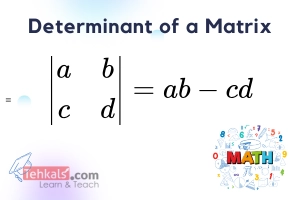
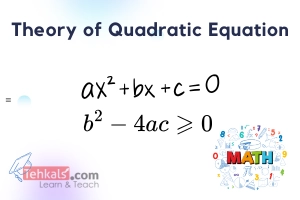
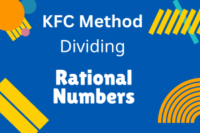
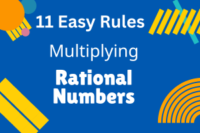
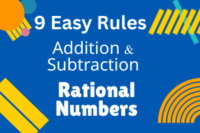

Thanks for helping very much thanks from heart ❤️💜❤️❤️❤️💜